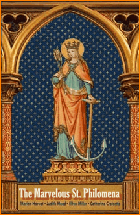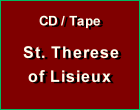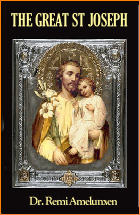Symbolism
 |
 |
 |
 |
 |
 |
 |
A Deeper Look at the Palm Tree
From time immemorial, the palm has been the symbol of victory. In the Ancient world a king or hero was commonly welcomed home by laying out a path of palm branches for him. The palm was given to the winners of athletic contests and combats in Greece and Rome. The palm was the symbol of the goddess Victory herself.
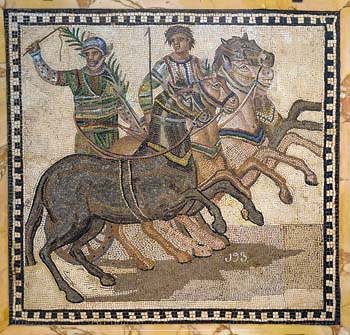 In ancient Rome the Latin word palma was even used at times as a word for victory – a victory of any kind. A lawyer who won his case in the Roman Forum would decorate his front door with palm leaves.
In ancient Rome the Latin word palma was even used at times as a word for victory – a victory of any kind. A lawyer who won his case in the Roman Forum would decorate his front door with palm leaves.
And so it is no wonder that the early Christians took the palm as a symbol for the victory of martyrs. It generically symbolized the victory of the spirit over the flesh, the victory of Christ over the pagan gods, the victory of the man or woman who offered his/her life in defense of the Faith and entered Heaven opened for mankind by the martyrdom of the Savior.
There seems to be, then, something innately noble and triumphant in the palm tree itself. Here are questions that the medieval man asked as he looked at the palm: Why is the palm so noble? What did God intend for man to know and admire in the arbor palmarum? What lessons can we learn from it?
Gregory the Great: The palm represents the righteous man
Since the first palm was traced to Babylonia in the plains of the Tigris and Euphrates more that 2,300 years before the birth of Christ, many medievals held that the palm tree was the Tree of Life in the Garden of Eden. Clearly a tree with a great symbolic richness.
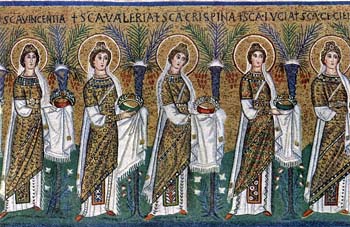 Already in the 6th century Pope Gregory the Great found the topic interesting and important enough to address in his
Commentary on Job (28:18).
Already in the 6th century Pope Gregory the Great found the topic interesting and important enough to address in his
Commentary on Job (28:18).
The Saint Pope points out that the life of the righteous man can be likened to a palm. Why? Because the lower part of the palm is rough to the touch and enveloped in dry barks; but above its fair fruits and its many fronds spread out in an amplitude of beautiful greenness. "For so is the life of the Elect," he notes, "despised below, beautiful above." (1)
Below, man is enfolded in heavy bark, that is, he is tried by many afflictions. But on high is a rich foliage with the amplitude of the reward.
St. Gregory notes that the palm is different from all other trees by its shape. Most trees spread out from the ground and then narrow at the top. But the palm begins with less circumference at the bottom and then rises high with its broad richness of fronds and fruit. And thus it is slender on the bottom and becomes huge on the top.
Now, how does this refer to the righteous man? Lovers of the earth are like the other trees, expanded below, narrowing above, for they are strong in their interest for the things of earth, but feeble in reaching for the things of Heaven. St Gregory writes:
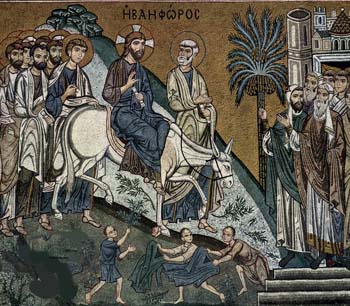 "For the sake of earthly gains, the earthly minded men submit to any injury, but for the sake of the heavenly reward they refuse to bear the insults even of the most trifling word. ... So it is thus the character of the palm tree represents the life of righteous man who is weak in earthly pursuits and strong in heavenly ones." (2)
"For the sake of earthly gains, the earthly minded men submit to any injury, but for the sake of the heavenly reward they refuse to bear the insults even of the most trifling word. ... So it is thus the character of the palm tree represents the life of righteous man who is weak in earthly pursuits and strong in heavenly ones." (2)
The palm is known to live as long as two centuries and still retain its vigor, flourishing when its roots are in rich soil. And so the righteous man derives his vigor from the grace of Jesus Christ and the Sacraments of the Holy Church, and thus grows luxuriantly to achieve eternity.
Finally, Pope St. Gregory notes the palm's slowness of growth and its persistence in remaining green throughout the year. And so he finds another signification: The palm represents the Church who slowly and firmly gathers the many into the Faith.
Thus we see how a man – and indeed a Pope and scholar – turned toward God will seek moral significance and the deeper meaning of the things around him, even something so simple as the arbor palmorum.
A symbol of the Church
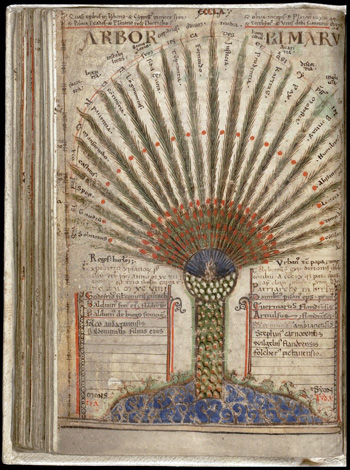 A 11th century French Benedictine monk and chronicler also provides us an understanding of the palm tree. He is Lambert, Abbot of Saint-Omer, and known for his fabled manuscript Liber Floridus (Book of Flowers).
A 11th century French Benedictine monk and chronicler also provides us an understanding of the palm tree. He is Lambert, Abbot of Saint-Omer, and known for his fabled manuscript Liber Floridus (Book of Flowers).
Lambert sees the palm firmly planted on the summit of Mount Zion, the Holy City, a symbol of Ecclesia, the Church Triumphant. For Lambert, a zealous promoter of the Crusades, the palm is in particular the Church of Jerusalem restored to Christianity in 1099.
In his medieval encyclopedia on nature, Lambert favors eight trees, tracing them to verses from Ecclesiasticus, finding them all symbolic of the Church Triumphant. The palm – "I was exalted like a palm tree in Cades (Ecclus 24:17-19) – he places in the number two spot, associating it with the idea of victory through martyrdom.
But Lambert goes beyond the classic representation; he also equates the tree with men of courage who are embellished with high virtue and kept free from all vice by their devotion to an ideal. (3) The palm is the perfect Crusader.
A tree ennobled by an encounter with Christ
Artists of the Middle Ages took delight in depicting the noble gesture of the palm on the Flight to Egypt of the Holy Family. This episode is based on a chapter in The Gospel of Pseudo-Matthew that caught the fancy of the medieval imagination. The legend would later be recorded in Jacobus Voragine’s 13th century compilation The Golden Legend, and in an early Swedish Legendarium of Nicodemus.
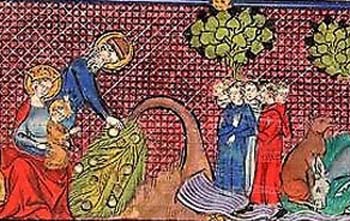
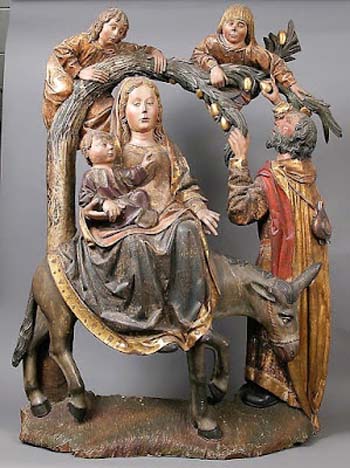 And so it came to pass on the third day of their journey, while they were walking Holy Mary was fatigued by the excessive heat of the sun in the desert. And so the Holy Family stopped to rest a little under the shade of a palm tree.
And so it came to pass on the third day of their journey, while they were walking Holy Mary was fatigued by the excessive heat of the sun in the desert. And so the Holy Family stopped to rest a little under the shade of a palm tree.
And as the Blessed Mary was sitting there, she looked up at the foliage of the palm and saw it full of fruit, and wished to have some to relieve the hunger of her spouse and her Divine Son. St. Joseph, who was thinking more of the want of water because their skins were empty, sadly noted the tree was too high to pick the delectable fruit.
Then the Child Jesus, with a joyful countenance, reposing in the bosom of His Mother, said to the palm: "O tree, bend your branches, and refresh My Mother with your fruit."
And immediately at these words, the palm gracefully bent its top down to the very feet of the Blessed Mary. And St. Joseph gathered from it fruit, with which they were all refreshed. And after he had gathered all of its fruit, it remained bent down, waiting the order to rise from Him who had commanded it to stoop.
Then Jesus said to it: "Raise yourself, O palm tree, and be strong, and be the companion of my trees that are in the Paradise of My Father; and open from your roots a vein of water which has been hid in the earth. And let the waters flow, so that we may be satisfied from you."
And it rose up immediately, and at its root there began to come forth a spring of water exceedingly clear and cool and sparkling. And when they saw the spring of water, they rejoiced and satisfied themselves and their beast.
The next day as they were setting out thence, Jesus turned to the palm and said: "This privilege I give, O palm tree, that one of your branches be carried away by My Angels and planted in the Paradise of My Father. And this blessing I will confer upon you, that it shall be said of whomever conquers in any contest, that you have attained the palm of victory."
And while He was speaking, behold, an Angel of the Lord appeared and stood upon the palm tree. And, taking off one of its branches, the Angel flew to Heaven with the branch in his hand.
Thus did the palm tree give us the example of how we should obey and serve Our Lord and His Blessed Mother. And we see how Jesus Christ Himself rewarded the palm, conferring upon it the sign of victory and giving it a place in Paradise.
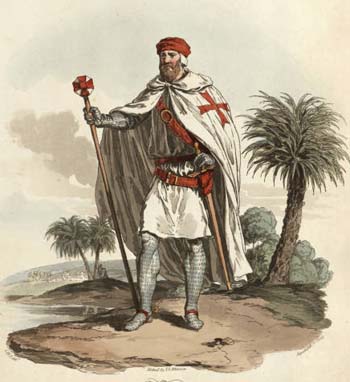


The winner of a Roman chariot race
with the victory palm
And so it is no wonder that the early Christians took the palm as a symbol for the victory of martyrs. It generically symbolized the victory of the spirit over the flesh, the victory of Christ over the pagan gods, the victory of the man or woman who offered his/her life in defense of the Faith and entered Heaven opened for mankind by the martyrdom of the Savior.
There seems to be, then, something innately noble and triumphant in the palm tree itself. Here are questions that the medieval man asked as he looked at the palm: Why is the palm so noble? What did God intend for man to know and admire in the arbor palmarum? What lessons can we learn from it?
Gregory the Great: The palm represents the righteous man
Since the first palm was traced to Babylonia in the plains of the Tigris and Euphrates more that 2,300 years before the birth of Christ, many medievals held that the palm tree was the Tree of Life in the Garden of Eden. Clearly a tree with a great symbolic richness.

Virgin martyrs carry the crowns & have palm trees behind them as symbols of victory
The Saint Pope points out that the life of the righteous man can be likened to a palm. Why? Because the lower part of the palm is rough to the touch and enveloped in dry barks; but above its fair fruits and its many fronds spread out in an amplitude of beautiful greenness. "For so is the life of the Elect," he notes, "despised below, beautiful above." (1)
Below, man is enfolded in heavy bark, that is, he is tried by many afflictions. But on high is a rich foliage with the amplitude of the reward.
St. Gregory notes that the palm is different from all other trees by its shape. Most trees spread out from the ground and then narrow at the top. But the palm begins with less circumference at the bottom and then rises high with its broad richness of fronds and fruit. And thus it is slender on the bottom and becomes huge on the top.
Now, how does this refer to the righteous man? Lovers of the earth are like the other trees, expanded below, narrowing above, for they are strong in their interest for the things of earth, but feeble in reaching for the things of Heaven. St Gregory writes:

On Palm Sunday palms were waved & strewn on the path of Christ on His entrance into Jerusalem
The palm is known to live as long as two centuries and still retain its vigor, flourishing when its roots are in rich soil. And so the righteous man derives his vigor from the grace of Jesus Christ and the Sacraments of the Holy Church, and thus grows luxuriantly to achieve eternity.
Finally, Pope St. Gregory notes the palm's slowness of growth and its persistence in remaining green throughout the year. And so he finds another signification: The palm represents the Church who slowly and firmly gathers the many into the Faith.
Thus we see how a man – and indeed a Pope and scholar – turned toward God will seek moral significance and the deeper meaning of the things around him, even something so simple as the arbor palmorum.
A symbol of the Church

The palm tree illustrated in Lambert's Liber Floridus
Lambert sees the palm firmly planted on the summit of Mount Zion, the Holy City, a symbol of Ecclesia, the Church Triumphant. For Lambert, a zealous promoter of the Crusades, the palm is in particular the Church of Jerusalem restored to Christianity in 1099.
In his medieval encyclopedia on nature, Lambert favors eight trees, tracing them to verses from Ecclesiasticus, finding them all symbolic of the Church Triumphant. The palm – "I was exalted like a palm tree in Cades (Ecclus 24:17-19) – he places in the number two spot, associating it with the idea of victory through martyrdom.
But Lambert goes beyond the classic representation; he also equates the tree with men of courage who are embellished with high virtue and kept free from all vice by their devotion to an ideal. (3) The palm is the perfect Crusader.
A tree ennobled by an encounter with Christ
Artists of the Middle Ages took delight in depicting the noble gesture of the palm on the Flight to Egypt of the Holy Family. This episode is based on a chapter in The Gospel of Pseudo-Matthew that caught the fancy of the medieval imagination. The legend would later be recorded in Jacobus Voragine’s 13th century compilation The Golden Legend, and in an early Swedish Legendarium of Nicodemus.

In the flight into Egypt a palm tree bended to give its fruits to the Holy Family, above, a medieval depiction, below, a 15th c. sculpture

And as the Blessed Mary was sitting there, she looked up at the foliage of the palm and saw it full of fruit, and wished to have some to relieve the hunger of her spouse and her Divine Son. St. Joseph, who was thinking more of the want of water because their skins were empty, sadly noted the tree was too high to pick the delectable fruit.
Then the Child Jesus, with a joyful countenance, reposing in the bosom of His Mother, said to the palm: "O tree, bend your branches, and refresh My Mother with your fruit."
And immediately at these words, the palm gracefully bent its top down to the very feet of the Blessed Mary. And St. Joseph gathered from it fruit, with which they were all refreshed. And after he had gathered all of its fruit, it remained bent down, waiting the order to rise from Him who had commanded it to stoop.
Then Jesus said to it: "Raise yourself, O palm tree, and be strong, and be the companion of my trees that are in the Paradise of My Father; and open from your roots a vein of water which has been hid in the earth. And let the waters flow, so that we may be satisfied from you."
And it rose up immediately, and at its root there began to come forth a spring of water exceedingly clear and cool and sparkling. And when they saw the spring of water, they rejoiced and satisfied themselves and their beast.
The next day as they were setting out thence, Jesus turned to the palm and said: "This privilege I give, O palm tree, that one of your branches be carried away by My Angels and planted in the Paradise of My Father. And this blessing I will confer upon you, that it shall be said of whomever conquers in any contest, that you have attained the palm of victory."
And while He was speaking, behold, an Angel of the Lord appeared and stood upon the palm tree. And, taking off one of its branches, the Angel flew to Heaven with the branch in his hand.
Thus did the palm tree give us the example of how we should obey and serve Our Lord and His Blessed Mother. And we see how Jesus Christ Himself rewarded the palm, conferring upon it the sign of victory and giving it a place in Paradise.

The palm tree signifies the perfect Crusader
- Hill, Thomas D. “Dante’s Palm: Purgatorio XXII: 130-135.” MLN, vol. 82, no. 1, John Hopkins University Press, 1967, p. 103.
- Ibid, pp 104.
- Mayo, Penelope C. “The Crusaders under the Palm: Allegorical Plants and Cosmic Kingship in the ‘Liber Floridus.’” Dumbarton Oaks Papers, vol. 27, Dumbarton Oaks, Trustees for Harvard University, 1973, pp. 35-38.
- Adapted from The Gospel of Pseudo-Matthew, chap. 20

Posted January 24, 2021
______________________
______________________




